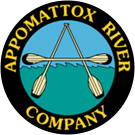Last Sunday we met some friends, currently from Roanoke, that we knew back in our WV days and hit the river. The Balcony Falls run was chosen for the meet up and paddle. This was our first river trip of the summer as a family. Our friends were bringing whitewater boats, so I decided to take some inflatables for me and the girls. Harriet, my wife, took a Jackson Antix 2.0 that she'd never paddled before.
The Balcony Falls run on the James River is often referred to as the Glasgow to Snowdon paddle. It is 4.8mi. with Class II+ (III) rapids. It's a great, fun run for beginner to intermediate paddlers and a fantastic run for family adventure.
I packed the Star Raven II tandem for our youngest (10 yrs.) and I to paddle together. The Star Viper XL was for our eldest ( 12 yrs.) to paddle solo. Arriving at the put-in, it took me all of 10 minutes to pump up both kayaks, and get them ready for the river. The Star kayaks from NRS come with backpacks, pumps, and repair kits.
Our eldest did great in the Viper XL.

The Viper XL comes "with an aggressive rocker design and eight more inches of length, the STAR Viper XL Inflatable Kayak is built for bigger paddlers looking for an inflatable that can ride over waves, punch through holes, surf and ferry like a hard-shell." And we currently have it on sale for $896.
The Raven II tandem was equally as fun on this float.

The Raven II Inflatable Kayak is good to paddle "with a friend for whitewater thrills and lazy-floating fun. Or, load it with gear and paddle solo for multiday adventures. The tandem Raven II gives you unlimited possibilities for fun and adventure on the water." The Raven II is also on sale for $821.
Harriet enjoyed the Antix so much she decided to hold on to it for the rest of the year to paddle it a few more times. We have 2023 Antix on sale.

The whole day was a ton of fun, and it was such an easy load to carry to the river between the Antix and the two inflatables. The Viper XL even served as a great lunch table when we took a break. River lunches are a favorite in our family.

Our eldest has now paddled Balcony solo twice. It feels like she is starting to come into that phase of life that brings the right amount of physical capabilities with her youthful drive for independence. But she's still smart enough to follow her mother's line.

And young enough to still love "jump rock."

Our youngest on the other hand, has been in a kayak or canoe with me since she was 10 months old. This trip was the first where she starting asking about paddling her own craft. It won't be long, and these inflatables seem like the perfect transition kayak for that personal growth.
They are great for adults as well. Whether you don't want to worry about having a car rack for transportation, or you don't have space to store a rotomolded kayak, inflatables are a great option. Plus they are lighter!
Whatever craft you choose, get out on the river this summer and soak in the beauty of our bounty! Here in Virginia, from mountains to the sea, we have the chance to paddle in splendor!



























